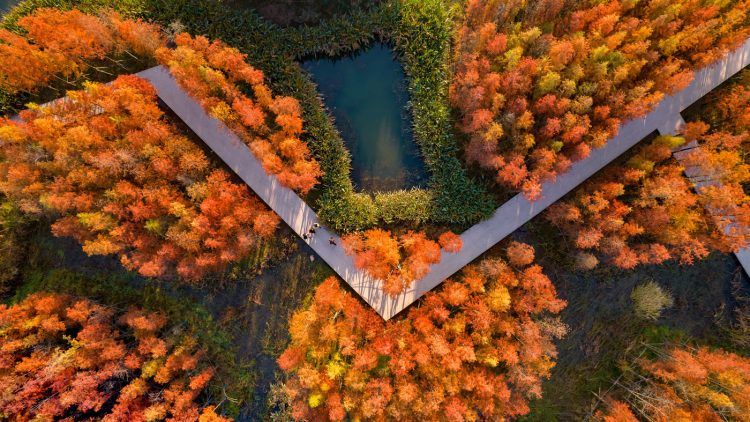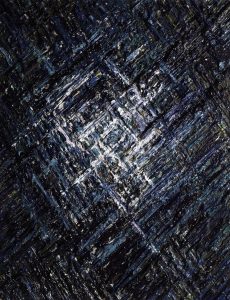Transform an urban dumping ground into an island-jeweled lake
In the city of Nanchang, within the Yangtze River flood plain in east-central China, Turenscape transformed a badly abused 126-acre landscape into a dreamlike floating forest that regulates stormwater, provides habitat for wildlife, offers an array of recreational opportunities, and gives local residents a new way to connect with nature.
All of this has lent a unique identity to the New District, serving as a catalyst for urban development in the surrounding area. Fish Tail Park offers a replicable model of designed urban nature for regions with monsoon or variable climates that can address the multiple challenges of floods, habitat restoration, and recreational demands. Inspired by the ancient concept of farming atop marshland, and by simple cut-and-fill techniques such as the Aztec Chinampas, or floating garden system, the coal ash dumped on site was recycled and mixed with dirt from the fish pond dykes to create numerous islets.

Inspired by the ancient concept of farming atop marshes, and Chinampa-style floating gardens, the coal ash dumped on the site was recycled and mixed with fill from the fish pond dykes to create a lake with numerous islets.
Photo credit: Turenscape

Tree species adapted to fluctuating water levels were selected, including Taxodiumdistichum , Taxodiumdistichum var. imbricatumandMetasequoiaglyptostroboides, which have a beautiful fall color.
Photo credit: Turenscape
A flood-adapted forest at the heart of the Park
Inspired by Poyang Lake’s native monsoon-flood-adapted marsh landscape, the firm selected tree species that are able to survive fluctuating water levels, including Taxodium distichum, Taxodium distichum var. imbricatum and Metasequoia glyptostroboides. Because fluctuating water levels often expose barren muddy shorelines, perennial and annual wetland plants were planted along the shorelines and island edges, and lotus plants provide highly efficient lake cover.
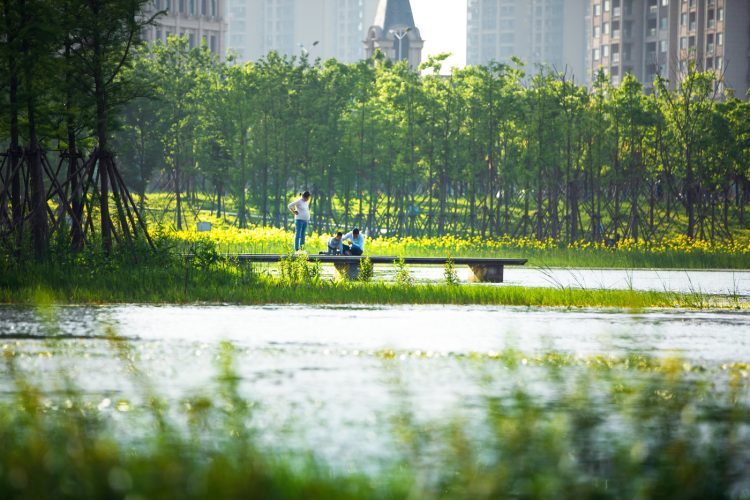
Various species of emergent, floating and underwater plants that are adapted to large water-level fluctuations are planted around the edges of the islets and cover the otherwise muddy shorelines during the dry season-Monsoon season.
Photo credit: Turenscape
A recreational waterfront where the city and nature meet
The central forest on the water, which is submerged during the annual monsoon floods, provides opportunities to explore nature and a “messy,” immersive marsh experience. Meanwhile, the waterfront at the periphery of the park is designed to accommodate 20-year floods and to provide a zone that can meet the recreational needs of the local population, including natural playgrounds, beaches, fountains, and lawns. There are also terraced constructed wetlands designed to filter urban runoff.
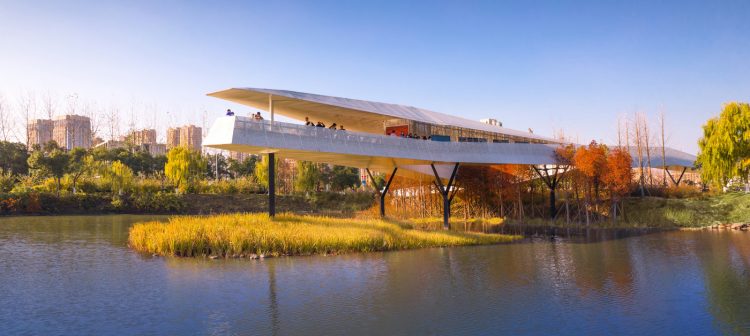
At the main entrance, an overpass is integrated with an art gallery and cafeteria, providing a day and night attraction. At the end of the overpass is a pavilion overlooking Aixi Lake offering a sweeping vantage of the city’s skyline.
Photo credit: Turenscape

One of the platforms floating over water, built in a contemporary style with perforated aluminum plate, which creates an arresting contrast with the “messy” natural surroundings.
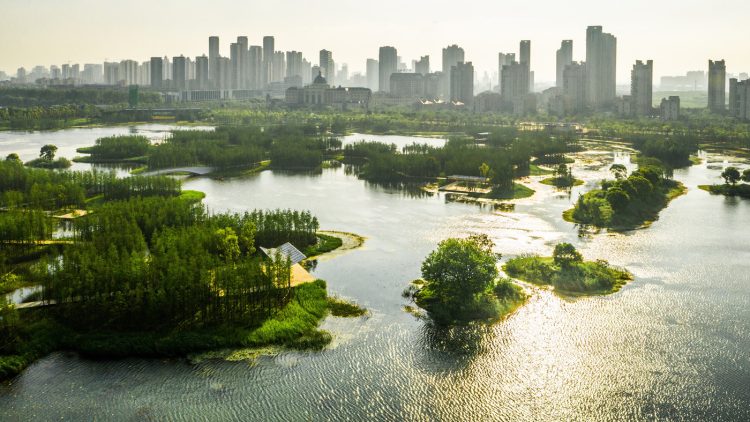
In just three years and at a modest budget, the former urban dump and abandoned fish farm was transformed into a floating forest providing holistic ecosystems services, and has become one of the most-visited urban parks in the region.
A flood-resilient boardwalk and spots for immersive contact with nature
A bike route and service road follow the park’s periphery. A network of pedestrian paths and platforms surround the lake and provide access to the forested isles, offering visitors a myriad of opportunities to explore. The boardwalk is designed to be submerged during 20-year flood events and annual monsoon floods, which can render the central part of the park inaccessible for several days at a time.

At the main entrance, an overpass is integrated with an art gallery and cafeteria, providing a day and night attraction. At the end of the overpass is a pavilion overlooking Aixi Lake offering a sweeping vantage of the city’s skyline.
Photo credit: Turenscape
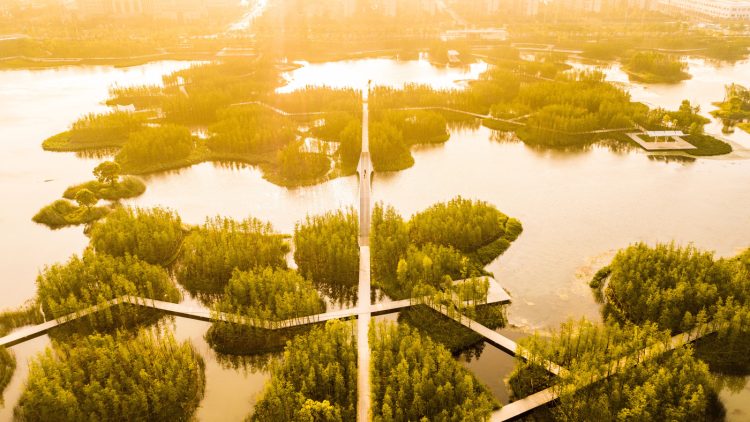
The lake with floating forest is able to accommodate two meters (6.5 feet) of water-level rise, providing the capacity to catch a full 1 million cubic meters of storm water inflow.
Photo credit: Turenscape
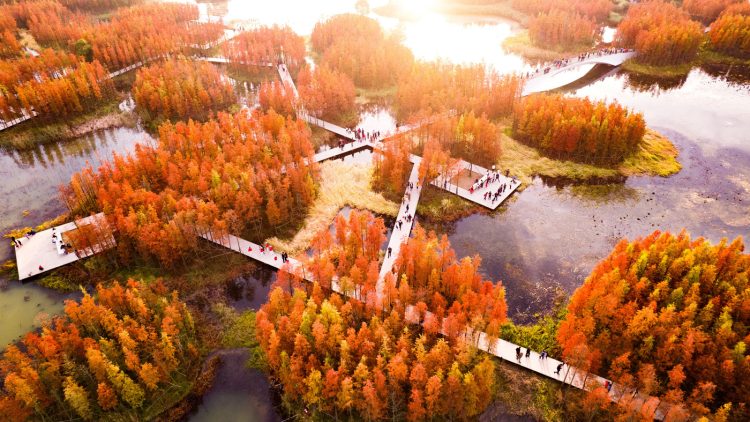
A network of boardwalk and platforms offers visitors an immersive contact with nature, which can be submerged during 20-year flood events and annual monsoon floods, which render the central part of the park inaccessible for several days.
Photo credit: Turenscape
Contemporary design and inviting focal points
dges, platforms, pavilions, and viewing towers are carefully placed to provide attractive focal points. Their contemporary design helps to infuse the ancient city, which dates back well over 2,000 years, with a sense of modernity and progress. Perforated aluminum plate is the main material used for the installed structures, creating an arresting contrast with the natural setting. At the park’s main entrance, a cafeteria is integrated with an overpass across a six-lane road, connecting Fish Tail Park with the neighboring Aixi Lake Park.
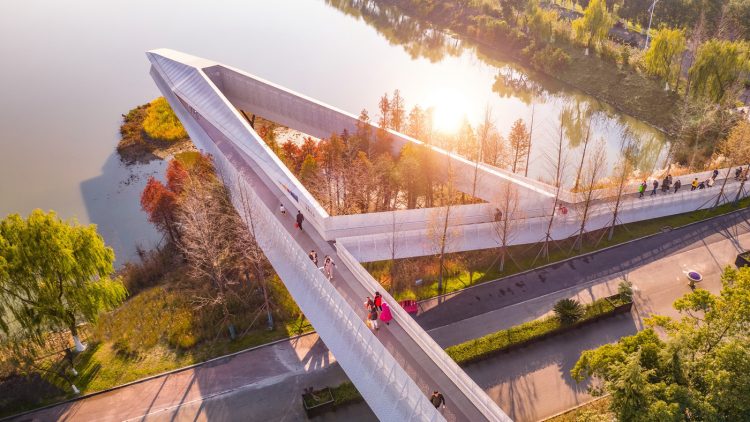
Fish Tail Park offers a replicable model of designed nature that can address multiple challenges of floods, habitat restoration and recreational demands. It has helped give Nanchang’s New District a distinct identity, and has become a catalyst for urban development.
Photo credit: Turenscape

Bridges, platforms, pavilions and viewing towers are carefully positioned to provide attractive focal points. Their contemporary design helps the park bring a modern taste and sense of progress to the ancient city.
Photo credit: Turenscape

The aerial view of one bridge in a contemporary style that lends the park and the more-than-2,000-year-old city a modern, progressive taste. It also offer vantage point for bird watching and vistas of the floating forest over water.
Photo credit: Turenscape
About Turenscape
1In 1988, Turenscape was founded by Doctor and Professor Kongjian Yu (Doctor of Design, GSD, Harvard University), and the company is certified as a first-level design institute by the Chinese government. With over 500 professionals, Turenscape is a multi- disciplinary design team that provides quality and holistic services in:Architectural design, Landscape design, Urban design, Environmental design, Engineering. Under the leadership of Doctor Kongjian Yu, Turenscape has planned and designed over 300 ecological cities and 1,000 landscape projects in China over the past 20 years. The projects are located in 200 cities, and more than 600 projects have been built and realized. Turenscape's projects have earned considerable international acclaim for their innovative and environmentally sound designs, and the firm has won 13 consecutive American Society of Landscape Architects (ASLA) Awards in the past 10 years, as well as 5 World’s Best Landscape Awards at the World Architecture Festival.

 English
English 日本語
日本語